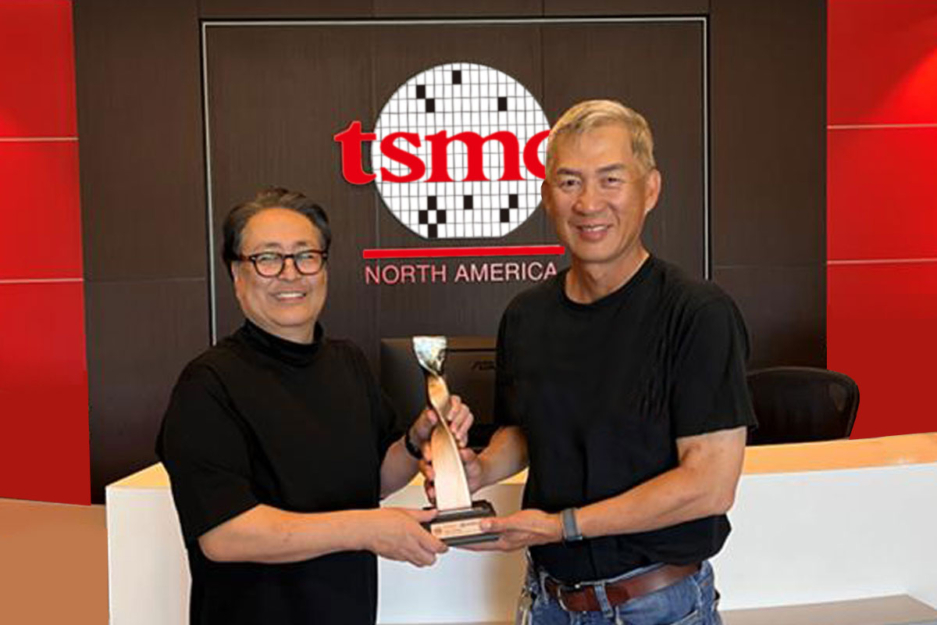
Over the climb to orbit, Each individual with the Saturn V's 3 stages burned for a bit lengthier than envisioned. This left the craft within an orbit roughly one particular kilometer higher than predicted, something properly within tolerance. A burn up eleven seconds for a longer period than planned intended which the CM entered the Earth's atmosphere a bit faster and at a shallower angle than prepared, but nonetheless inside tolerance. This discrepancy took place not due to effectiveness of the assistance procedure (which was exemplary), but because the melt away had been controlled from Earth. The CM's environmental Management procedure kept the ship's cabin inside of suitable temperatures and pressures through the mission, growing by only 5.6 °C (ten °File) during atmospheric entry.[58][59]
The a hundred-collection figures have been reserved for your Saturn I rocket, so AS-101 could well be the main Saturn I start. Five Small Joe launched checks on the CSM ended up mentioned by “A” followed by a selection from one to four; the initial was an unnumbered qualification flight. Acquiring closer to manned missions were being the greater Superior Saturn IB launches. These missions were selected “AS” for Apollo-Saturn followed by a quantity commencing with 201, the two hundred-series quantities have been reserved for your Saturn IB rocket.
The identify Snowcone was employed for the CM and Haystack was used for the LM in equally interior and exterior communications all through early mission preparing.[seventy five]
Goals for the Apollo four mission ended up to achieve flight knowledge within the Saturn V and spacecraft structural integrity and mutual compatibility, which includes on flight loads And through the separations as Every single Saturn V stage was fatigued and was discarded.
Following sizeable debate within NASA, it absolutely was made the decision in late 1962 that lunar missions would've a "lunar orbit rendezvous" manner whereby the entire Apollo spacecraft would be propelled toward lunar orbit through the 3rd stage with the launch car or truck, the S-IVB. As soon as in lunar orbit, the astronauts who'd land would enter what was then called the Lunar Tour Module, which would individual from the rest of the spacecraft, land, and soon after having off once again be discarded as soon as the crew had transferred back again.
Meanwhile, on Could 24, engineers on the North American plant located hairline cracks in propellant tank welds of A different S-II phase. The following day, staff from the VAB commenced the 2nd destack on the rocket, taking away the S-II phase on June 3 for in depth inspections. Comprehensive X-ray and dye penetrant exams uncovered no cracks, and workers began re-assembling the rocket on June eighteen. Engineers during the MSOB concluded the wiring get the job done in CM-017, reassembled it with its other parts, and returned it to your VAB where floor crews stacked the spacecraft for the ultimate time on June 20. The stacking, unstacking, and restacking process experienced taken 8 months.
About ninety seconds in advance of the 2nd phase cutoff, the middle motor shut down to scale back longitudinal pogo oscillations. At close to this time, the LOX stream level lessened, changing the combination ratio of The 2 propellants and making sure that there might be as very little propellant as is possible still left inside the tanks at the end of second phase flight. This was finished in a predetermined delta-v.[35]
The pause involving these actions would give time with the crew to escape through the Start Escape Tower or (during the later on stages of your flight) the propulsion technique of the Provider module. A third command, "Risk-free", was utilized following the S-IVB stage achieved orbit to irreversibly deactivate the self-destruct system. The technique was inactive as long as the rocket was even now over the launch pad.[seventy five] Startup sequence[edit]
On September 3, 2002, astronomer Bill Yeung identified a suspected asteroid, which was supplied the invention designation J002E3. It gave the impression to be in orbit around the Earth, and was soon found from spectral Examination to get protected in white titanium dioxide, which was An important constituent of your paint made use of on the Saturn V. Calculation of orbital parameters led to tentative identification as becoming the Apollo 12 S-IVB stage.
Depending on the applying layer, the decentralized applications are anticipated to hold for most significant market place during the forecast time period. Decentralized application (copyright) emphasize their Basis on decentralized networks as well as role of blockchain, with Ethereum getting a noteworthy System for DApp enhancement. This technologies allows for safe and clear facts processing and transaction execution.
Within the morning of Aug. 26, 1967, the crawler transporter rolled beneath ML-1 and picked it up from its six mount mechanisms. The primary flight-All set Saturn V exited the VAB to start its sluggish rollout to Start Pad 39A, with reporters from throughout the world witnessing the historic party. The eighteen-million-pound mix of the rocket, the cell launcher, the start umbilical tower, plus the crawler transporter moved at a lot less than just one mile for every hour for making The three.
With up to 2MB of MRAM and a couple of.75MB of SRAM, the Apollo4 Blue Plus has a lot more than sufficient compute and storage to take care of advanced algorithms and neural networks although displaying vivid, crystal-very clear, and smooth graphics.
Smoke and flames signal the opening of a historic journey given that the Saturn V clears the launch pad. Click on graphic to enlarge.
Armstrong found a transparent patch of floor and maneuvered the spacecraft in direction of it. As he acquired closer, now 250 feet (seventy six m) earlier mentioned the floor, he identified his new landing web site had a crater in it. He cleared the crater and located A different patch of degree ground.

Get Smart. Use Less Energy.
Ultra-low power SoCs for IoT endpoint devices
that demand complex operations
and longer battery life.
✍ Ambiq® is committed to further improve the quality of life by enabling the intelligence of endpoints while Wearable technology further reducing carbon footprints. Ambiq – your partner in endpoint intelligence.
✯✯✯Based in Austin, San Jose, Hsinchu, Shenzhen, and Shanghai, our leadership and management teams consist of advocates, builders, enthusiasts, entrepreneurs, explorers, incubators, inventors, pioneers, protectors, thinkers, and visionaries. With a diverse spectrum of experiences and skillset, we came together and united with one goal to enable the true Internet of Things where the battery-powered endpoint devices can truly be connected intuitively and intelligently 24/7.
Ambiq Wins the Demo of the Year Award at 2023 TSMC Technology Symposium
September 7, 2023, Austin, TX – Ambiq®, a leading developer of ultra-low-power semiconductor solutions that deliver a multifold increase in energy efficiency, was awarded the Demo of the Year Award by TSMC as a participant of the Innovation Zone at the 2023 TSMC North America Technology Symposium.
Ambiq Wins the Demo of the Year Award at 2023 TSMC Technology Symposium
During the April event, Ambiq showcased various product design wins using TSMC’s 22nm technology in wearables, digital health, smart home, Industrial IoT, pet trackers, and retail segments, with industry-leading energy efficiency. Ambiq also featured two live demos emphasizing its leadership in enabling endpoint AI with its HeartKit™ for remote patient monitoring and its graphics display capabilities for a vivid user interface.

TSMC pioneered the pure-play semiconductor foundry business model when it was founded in 1987, helping startup companies accelerate their innovations by providing access to the industry’s leading process technologies and manufacturing capacity. Since 2021, TSMC has expanded that mission with an Innovation Zone at its worldwide Technology Symposiums, highlighting how TSMC partners with startup companies to enable cutting-edge products from various applications, including high-performance computing, communication, automotive, IoT, and consumer segments.
“We’re grateful to TSMC and our booth visitors for allowing us to share our energy-efficient technology and processor solutions with them,” said Ambiq’s CEO, Fumihide Esaka. “We’re moving towards an exciting frontier of AI becoming more engrained with our daily lives. With that vision on the horizon, we will continue to develop innovative and first-of-its-kind ultra-low-powered solutions that keep innovation and sustainability in mind.

Ambiq’s mission is to develop the lowest-power semiconductor solutions to enable intelligent devices everywhere by developing the lowest-power semiconductor solutions to drive a more energy-efficient, sustainable, and data-driven world. Ambiq has helped leading manufacturers worldwide develop products that last weeks on a single charge (rather than days), while delivering a maximum feature set in compact industrial designs. Ambiq’s goal is to take Artificial Intelligence (AI) where it has never gone before in mobile and portable devices, using Ambiq’s advanced ultra-low power system on chip (SoC) solutions. Ambiq has shipped more than 200 million units as of March 2023.
Ambiq Designs Low-Power for Next Gen Endpoint Devices
Ambiq’s VP of Architecture and Product Planning, Dan Cermak, joins the ipXchange team at CES to discuss how manufacturers can improve their products with ultra-low power. As technology becomes more sophisticated, energy consumption continues to grow. Here Dan outlines how Ambiq stays ahead of the curve IC design by planning for energy requirements 5 years in advance.
Ambiq Highlights From Embedded World 2024
Facebook | Linkedin | Twitter | YouTube